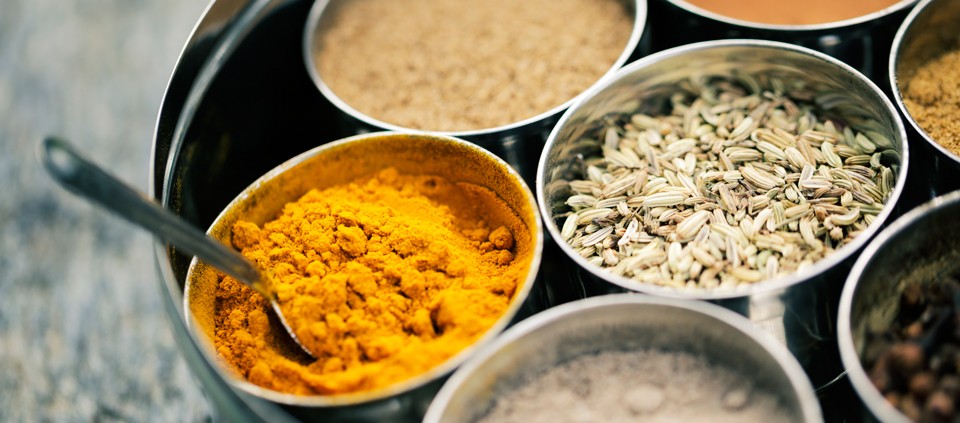Ayurveda to Support Healing from Lyme Disease

When Gerard C. Buffo, MD, a Kripalu School of Ayurveda graduate, contracted Lyme disease (along with a co-infection) for the second time in 2009, it changed the course of his career. “I had significant post-Lyme manifestations that made it impossible to work at my pre-Lyme levels,” he recalls. He spent about a week in the ICU and underwent extensive antibiotic treatment for two years, but he wasn’t able to live a “productive, functional life” again until he discovered Ayurveda, he says.
“Allopathic medicine brought me partway back, but Ayurveda restored me fully,” he says. Inspired, Gerard went on to study yoga’s sister science at the Ayurvedic Institute in Albuquerque, New Mexico, and at Kripalu. Today, he uses the principles and practices of Ayurveda, along with the combined antibiotic therapies of allopathic medicine, to treat people with Lyme disease and other illnesses.
Gerard generally treats his patients with Lyme using Western allopathic methods first, then assesses each person from an Ayurvedic perspective, tailoring therapies to their individual needs. But there’s a common theme that runs through most of his treatments. “Lyme affects the neurological system of almost all patients,” he observes. As a result, in the parlance of Ayurveda, “they’re vata deranged.”
Vata is the dosha, or subtle energy, comprised of air and ether. When it’s out of balance, you’re more likely to experience symptoms such as stiff muscles, achy joints, anxiety, restlessness, memory problems, trouble concentrating, fatigue and weakness, insomnia and other sleep problems, and poor digestion—all symptoms that will sound familiar to many people who are dealing with Lyme.
The primary aim of the Ayurvedic support and rejuvenation therapies that Gerard prescribes for his patients is to decrease vata. Many of the recommendations that appear below are approaches that he used during his own recovery. However, he emphasizes that it’s vital to work with experienced professionals rather than to try to treat Lyme disease on your own.
Follow a Few Ayurvedic Diet Rules
Gerard encourages his patients to follow a whole-foods, plant-based diet as much as possible, to reduce inflammation and balance agni (digestive fire). He also recommends limiting refined, processed foods, such as simple sugars and gluten, as well as dairy, “because the less simple sugars you have available, the less likely that bacteria and yeast are going to be able to reproduce” as a result of antibiotic treatment.
Support Your Microbiome
Maintaining a healthy gut is important for everyone, Gerard says, “but it’s even more important for people who are fighting Lyme. The gut is one of our largest immunological reservoirs,” he explains. “The microbiome produces vitamins, enzymes, antibodies, and hormones that serve to keep the body in homeostasis and promote healing.”
That’s why it’s important to take a probiotic that repopulates your microbiome with healthy flora during antibiotic treatment. A Lyme-literate doctor or health practitioner with experience in integrative medicine should be able to help you find the right formula for your particular needs.
Fermented and/or cultured foods are also useful for feeding the microbiome, Gerard says.
Get Better Sleep
Sleep is an essential key to healing, says Gerard, but many people have trouble sleeping when they’re living with Lyme. Here are his tips for getting a better night’s sleep:
- Create a sleep ritual: Make sure your bedroom is a dark, comfortable, quiet environment. Go to bed and wake up at the same time every day.
- Try a natural sleep aid: Gerard recommends a lavender oil supplement called Silexan (the main ingredient in the commonly available product CalmAid), or drinking a half cup of tart cherry juice before bed. A randomized, double-blind pilot study geared toward older adults showed significant reductions in the severity of insomnia with tart cherry juice intake. You could also try eating two kiwis before bed; research suggests this may be effective.
Tame Your Vata Dosha with a Warm Oil Massage
The Ayurvedic self-care practice called abhyanga can decrease vata, reduce anxiety, and lubricate the muscles, tissues, and joints, especially when lyme manifests as musculoskeletal pain, Gerard says. Warming oils, such as sesame oil or a vata-balancing oil blend, are the most useful. You can find instructions for abhyanga here.
Practice Gentle Yoga and Belly Breathing
From a Western viewpoint, Gerard explains, a body that’s fighting Lyme is stressed. “Stress manifests as adrenal outpouring of cortisol and catecholamines,” he says. “Gentle yoga and belly breathing increase parasympathetic nervous system activity and, from an Ayurvedic viewpoint, balance vata.”
Get Support
It’s important to deal with the mental and emotional aspects of Lyme, too. Gerard recommends doing psychotherapy with a Lyme-literate counselor and/or joining a Lyme support group, in person or online.
© Kripalu Center for Yoga & Health. All rights reserved. To request permission to reprint, please e-mail editor@kripalu.org.